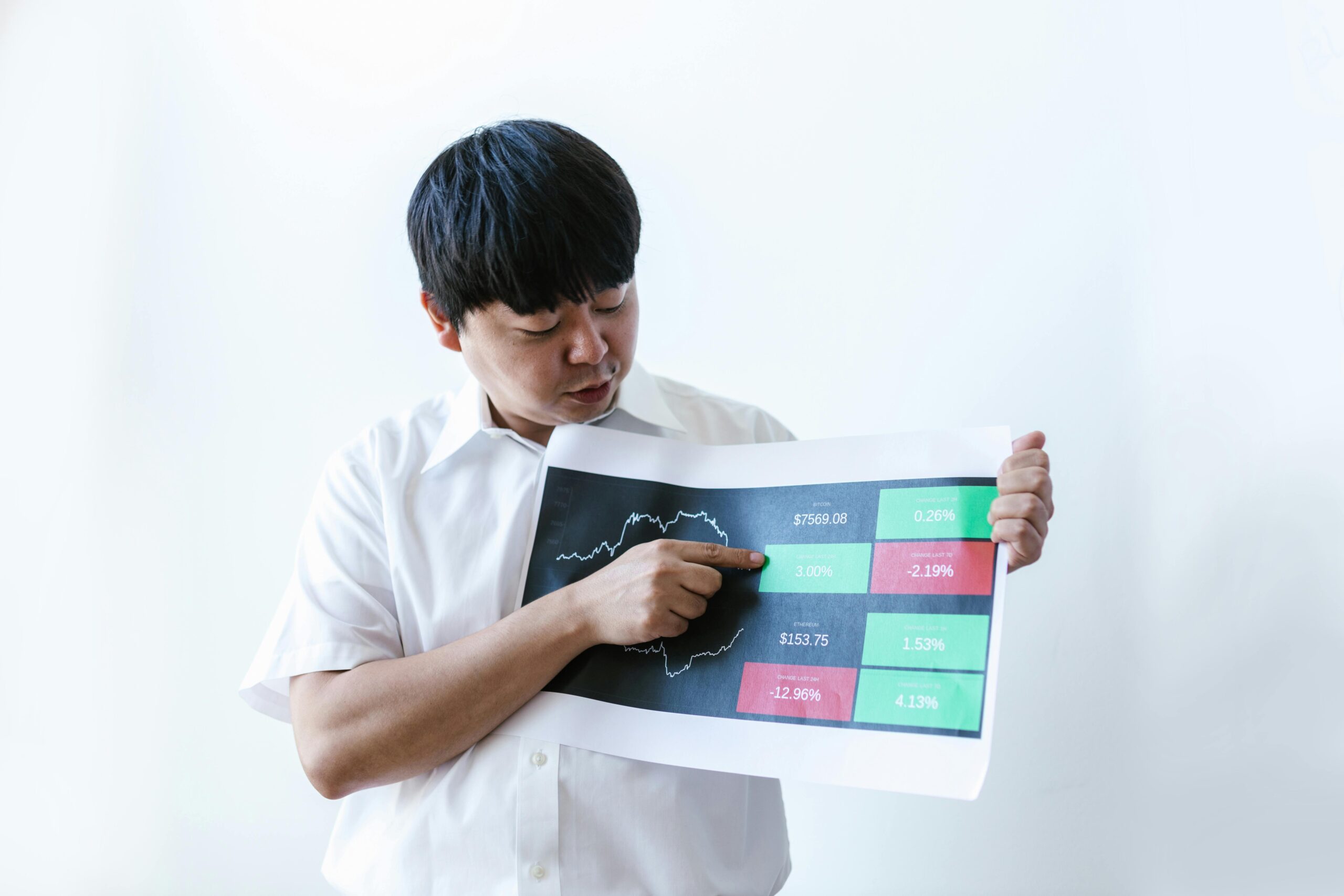When it comes to construction and infrastructure development in Pakistan, steel rate in Pakistan plays a crucial role in determining project costs and timelines. Are you curious about the latest steel price trends in Pakistan 2024? Or wondering how fluctuating steel market prices could impact your next big project? This article dives deep into the current steel rates in Pakistan, uncovering the trends, factors affecting prices, and what experts predict for the near future. If you’re involved in the construction industry or simply want to stay updated on steel price fluctuations in Pakistan, keep reading to discover invaluable insights.
Understanding the steel rate in Pakistan is not just about numbers; it’s about grasping the bigger picture of economic shifts, supply-demand dynamics, and geopolitical influences. Did you know that recent changes in global steel demand and raw material costs have caused significant shifts in Pakistan’s local steel market? Whether you’re a contractor, supplier, or investor, staying informed about the latest steel prices in Pakistan can save you thousands and help you plan better. In addition to price updates, we’ll explore the factors driving these changes, from government policies to international trade tensions, giving you a 360-degree view of the steel sector.
Moreover, the article highlights practical tips on how to navigate this ever-changing market and optimize your procurement strategy. With the steel rate in Pakistan constantly evolving, knowing when and where to buy steel can make all the difference. So, are you ready to unlock the secrets behind the steel pricing maze in Pakistan? Let’s embark on this journey to understand the latest trends and insights on steel rates in Pakistan and stay ahead in the competitive construction landscape!
How Are Steel Prices in Pakistan Changing in 2024? Key Factors Driving the Latest Trends
How Are Steel Prices in Pakistan Changing in 2024? Key Factors Driving the Latest Trends
The steel industry in Pakistan has always played a crucial role in the country’s economic development, with its prices reflecting various domestic and international factors. In 2024, steel prices in Pakistan are showing some interesting shifts that are important for contractors, manufacturers, and investors to understand. The steel rate in Pakistan is influenced by multiple variables that are causing fluctuations, sometimes unpredictably. This article digs deep into how steel prices are changing this year, highlighting the key drivers behind these trends and offering insights for anyone keeping an eye on the market.
Overview of Steel Prices in Pakistan: What’s Happening in 2024?
Steel prices in Pakistan have neither been steady nor consistently rising in 2024. The year started with a slight increase compared to late 2023, but since then, the rates have been bouncing up and down. Factors such as local demand, supply chain disruptions, and global raw material costs have all contributed to this volatility. According to recent market reports, the average steel rate in Pakistan for a 10mm rebar is hovering around PKR 185,000 to PKR 195,000 per ton, but this figure can vary depending on the city and supplier.
Historically, steel prices in Pakistan have been sensitive to changes in international market conditions, especially the costs of iron ore and coking coal, which are major inputs for steel manufacturing. In previous years, Pakistan heavily relied on imported raw materials, making the local steel prices vulnerable to foreign exchange fluctuations and shipping costs. This year, these factors remain relevant but are now joined by other emerging influences.
Key Factors Driving Steel Price Trends in 2024
There are several core reasons why steel prices in Pakistan are behaving the way they do in 2024. Understanding these helps industry players make better decisions and anticipate future changes.
-
Global Raw Material Costs:
Iron ore and coal prices have been unstable globally due to geopolitical tensions and supply chain constraints. For example, disruptions in Australia and Brazil, two of the largest iron ore exporters, caused raw material shortages. These shortages indirectly pushed Pakistani steel producers to pay more for imports, raising production costs. -
Domestic Demand and Construction Activity:
Pakistan’s construction sector is a major consumer of steel. In 2024, infrastructure projects, housing developments, and commercial constructions have seen moderate growth. However, inflation and high interest rates have dampened some demand. This fluctuating demand keeps the steel rates from stabilizing for a long period. -
Currency Fluctuations:
The Pakistani Rupee’s value against the US Dollar affects steel prices significantly. Since many raw materials are imported and priced in dollars, a weaker rupee means higher costs for steel producers, which then passes on to consumers. The rupee has seen some depreciation in 2024, contributing to rising steel rates. -
Government Policies and Import Tariffs:
To protect local steel manufacturers, the government has imposed certain tariffs and duties on imported steel and raw materials. These policies aim to encourage domestic production but sometimes lead to higher prices in the short term. Also, delays in policy announcements create uncertainty in the market. -
Energy Costs:
Steel production is energy-intensive. With rising electricity and gas prices in Pakistan, operational costs for steel mills have gone up. This increase directly impacts the final steel price.
Steel Rate in Pakistan: Latest Trends and Insights
Looking at the data from the first half of 2024, we can see some notable patterns:
- Price Range for Rebars (per ton): PKR 185,000 – PKR 195,000
- Price Range for Mild Steel (MS) Sheets: PKR 140,000 – PKR 150,000
- Price Range for Structural Steel: PKR 190,000 – PKR 200,000
These prices are not fixed and vary by region and supplier, but give a rough indication of the ongoing trends. Karachi, Lahore, and Islamabad markets often show slight price differences based on logistics and demand concentration.
Comparison of Steel Prices: 2023 vs 2024
| Year | Average Rebar Price (PKR/ton) | Major Influencing Factor |
|---|---|---|
| 2023 | 170,000 – 180,000 | Post-pandemic recovery and stable raw material prices |
| 2024 | 185,000 – 195,000 | Raw material cost spikes, currency depreciation, energy price hikes |
The increase from 2023 to 2024 shows the impact of global and local economic conditions combining to push steel prices upwards.
Practical Examples: What This Means for Consumers and Businesses
- Construction Companies:
Must plan their budgets more carefully to accommodate sudden price hikes. Long-term
Top 5 Influences on Steel Rate Fluctuations in Pakistan You Need to Know
Steel rate in Pakistan has always been a topic of interest for many industries, businesses, and even homeowners who are planning construction projects. The fluctuations in steel prices often create a ripple effect across the economy, influencing the cost of infrastructure development, housing, and manufacturing. Understanding the top factors driving these price changes is crucial if you want to make smarter buying decisions or just keep updated with the market trends. Today, we will dive deep into the top 5 influences on steel rate fluctuations in Pakistan you need to know, while also exploring the latest trends and insights about steel rate in Pakistan.
1. Global Raw Material Prices Impact Local Steel Rates
One of the biggest reasons why steel rate in Pakistan fluctuates is the variation in global prices of raw materials like iron ore, coal, and scrap metal. Pakistan largely depends on imports for these raw materials, so any change in international market costs instantly reflects on local steel prices. For example, if iron ore prices jump due to supply chain issues in countries like Australia or Brazil, Pakistani steel mills have to pay more, which in turn increases the steel rate in Pakistan.
Historically, these raw material prices have been very volatile. Between 2016 and 2020, iron ore prices saw several big peaks and troughs, directly causing ups and downs in steel cost locally. The recent global economic recovery post-pandemic also saw raw material prices surge, pushing steel rate in Pakistan to new heights.
2. Currency Exchange Rate Volatility
Since Pakistan imports a significant chunk of its steel raw materials, the exchange rate between Pakistani Rupee (PKR) and US Dollar (USD) plays a vital role. A weaker PKR means it costs more rupees to buy the same amount of raw materials priced in USD. Consequently, steel producers increase their prices to maintain profit margins.
To illustrate, when the PKR depreciated sharply in 2022, steel rates quickly followed the upward trend. Even minor fluctuations in exchange rates can have amplified effects on steel prices because of the large quantities involved. This is why many businesses keep a close eye on forex markets when planning their steel purchases.
3. Domestic Demand and Construction Sector Boom
The demand for steel in Pakistan is heavily tied to the construction and infrastructure sectors. When there’s a construction boom, demand surges, pushing steel rates higher. Over the past decade, Pakistan saw several phases of rapid urbanization and infrastructure projects like roads, bridges, and housing societies. These projects consume vast amounts of steel, which can tighten supply and drive prices up.
On the other hand, during economic slowdowns or political instability, construction activity slows down and demand for steel decreases, sometimes causing price drops. For example, in 2018 and 2019, political uncertainty and economic challenges caused a dip in construction projects, leading to more stable or even lower steel rates in Pakistan.
4. Government Policies and Import Tariffs
Government interventions like import duties, taxes, and trade policies strongly affect steel prices. Sometimes to protect local steel mills, Pakistan’s government imposes tariffs on imported steel or raw materials, which can make steel rate in Pakistan more expensive for buyers.
Conversely, lowering import duties can increase steel supply and reduce prices. For instance:
- Increase in import tariff on steel scrap may raise production costs.
- Reduction in customs duty on raw materials helps local mills lower their prices.
Such policy changes are often unpredictable and create short-term volatility in the market. It’s important for buyers and investors to stay informed about the latest government announcements related to steel trade.
5. Energy and Production Costs
Steel manufacturing is an energy-intensive process. Fluctuations in electricity and gas prices also impact steel rate in Pakistan. When energy prices rise, steel mills’ production costs increase, forcing them to raise steel prices to maintain profitability.
Pakistan has experienced energy crises in the past, with frequent power outages and increasing fuel prices. This instability often leads to higher manufacturing costs and thus higher steel price rates. For example, in 2021, a sharp rise in fuel prices led many industries, including steel, to increase their prices substantially.
Latest Trends and Insights in Steel Rate in Pakistan
Keeping an eye on recent market trends helps in understanding where steel prices might be headed next. Some current observations include:
- Shift towards locally produced steel: Pakistan is trying to reduce dependency on imports by boosting local steel production capacity. This could stabilize prices in the long run.
- Increasing demand for high-quality steel: Modern construction demands stronger and more durable steel types, which are usually costlier.
- Impact of global economic policies: Tariffs and trade agreements between major steel producers like China, India, and the US have indirect effects on Pakistan’s steel prices.
- Technological advancements: New manufacturing techniques are gradually improving efficiency and reducing costs, though benefits take time to reflect in prices.
Summary Table: Factors Affecting Steel Rate in Pakistan
| Influence Factor | Impact on
Where to Find the Most Accurate and Updated Steel Rate in Pakistan Today
Where to Find the Most Accurate and Updated Steel Rate in Pakistan Today
In Pakistan, steel is one of the most important materials used in construction, manufacturing, and many other industries. People looking for the latest steel rate in Pakistan often feel confused because prices change quite frequently, sometimes daily. This article will help you understand where to find the most accurate and updated steel rates in Pakistan today, along with some insights on the overall market trends. If you have been searching for reliable sources, you are at the right place.
Why Steel Rate in Pakistan Fluctuates Frequently?
Steel prices in Pakistan do not remain stable for a long time, mostly because of several factors that affect the cost. Some of these are:
- Global steel market conditions: Prices in the international market directly influence local rates.
- Currency exchange rate fluctuations: Since Pakistan imports a significant amount of raw materials, any change in the dollar-rupee rate impacts steel prices.
- Government policies and taxes: Tariffs, duties, and taxes imposed by the government can raise or lower the prices.
- Demand and supply imbalance: If demand for steel rises suddenly, prices are likely to go up.
- Raw material costs: Iron ore, coal, and scrap metal prices also affect steel production costs.
Because of these variables, the steel rate in Pakistan changes often and sometimes unpredictably.
Where to Check the Most Updated Steel Rates in Pakistan?
Finding the most current steel prices can be tricky if you do not know where to look. Here are some reliable sources that provide updated steel rates almost daily.
-
Local Steel Mills Websites
Many major steel manufacturers in Pakistan publish their current prices online or announce changes through press releases. Examples include:- Pakistan Steel Mills
- Agha Steel Industries
- Amreli Steels
These sources are usually reliable but may not update in real-time.
-
Online Marketplaces and E-Commerce Platforms
Websites like OLX Pakistan and other construction material portals sometimes list steel prices, especially for retail buyers. However, prices on these platforms might vary due to individual sellers. -
Steel Dealers and Suppliers in Karachi
Karachi being the commercial hub, many steel suppliers update their rates daily based on market trends. Contacting local dealers directly or visiting their offices can give you the most accurate price information. -
Financial News Websites and Business Sections of Newspapers
News outlets such as Dawn, Business Recorder, and The News often publish regular updates on commodity prices including steel rates. -
Industry Reports and Trade Associations
Organizations like the Pakistan Steel Association provide reports and insights about market trends and average steel prices.
Latest Trends and Insights for Steel Rate in Pakistan
Looking at the recent data, steel prices in Pakistan have been showing an upward trend. This is mainly due to increased infrastructure projects and housing demands. Some points to consider:
- The government’s focus on CPEC (China-Pakistan Economic Corridor) has increased demand for steel.
- Inflation and currency depreciation make imports costlier.
- Local production capacity is struggling to meet growing demand.
- Some raw materials like iron ore have seen price hikes globally, which impacts local steel costs.
Here is a brief comparison of steel rates in Pakistan over the last six months (approximate values):
| Month | Steel Rate (per kg in PKR) | Percentage Change |
|---|---|---|
| November 2023 | 180 | – |
| December 2023 | 185 | +2.7% |
| January 2024 | 190 | +2.7% |
| February 2024 | 195 | +2.6% |
| March 2024 | 200 | +2.5% |
| April 2024 | 205 | +2.5% |
Prices might differ based on steel type, thickness, and supplier, but this table gives a general idea about the upward movement.
What Types of Steel Are Most Commonly Priced in Pakistan?
Understanding which types of steel are traded and priced can help buyers make informed decisions. The most popular types include:
- Reinforcement Bars (Rebar): Mostly used in concrete structures, this is the most common steel product priced in Pakistan.
- Mild Steel Sheets: Frequently used in manufacturing and fabrication.
- Steel Pipes and Tubes: Used in construction and industrial applications.
- Structural Steel Sections: Such as beams, channels, and angles used in large projects.
Each type has different pricing depending on quality grades, weight, and supplier.
Practical Tips to Get Best Steel Rates in Pakistan
If you are planning to buy steel for your project or business, keep these tips in mind to get the best deal:
- Always compare prices from multiple suppliers before making a purchase.
- Check for hidden costs like transportation, taxes
Expert Insights: What’s Behind the Rising Steel Prices in Pakistan This Year?
Steel prices in Pakistan have been on a rollercoaster ride this year, leaving many industry experts, builders, and consumers wondering what exactly is behind these sudden spikes. The steel rate in Pakistan affects everything from construction costs to manufacturing, so understanding the forces driving these changes is crucial. While many try to blame it on simple supply and demand, the reality is much more complex, involving local production challenges, international market trends, and government policies that all play their part.
What Factors Are Driving Steel Prices Up?
One of the main reasons why steel prices have been rising is the increasing cost of raw materials, especially iron ore and coal. Pakistan, unlike some steel-producing countries, relies heavily on imports for these raw materials. When global prices for iron ore rise, it directly impact the local steel manufacturing costs. For example, iron ore prices surged by nearly 50% compared to last year, putting pressure on steel mills to raise their rates.
Another key factor is the disruption in supply chains caused by ongoing global challenges. Ports faced congestion and shipping delays, which made it difficult for steel mills in Pakistan to get timely deliveries of raw materials. This delay in supply, combined with higher freight costs, has made steel production more expensive and slower.
Local Production Issues and Demand Growth
Pakistan’s steel industry faces some internal issues too. Many local steel mills operate below their full capacity because of outdated machinery and power shortages. This inefficiency means less steel is produced locally, increasing dependence on imported steel products which are often pricier.
At the same time, Pakistan’s construction sector is booming with many infrastructure projects started by the government and private sector. This surge in demand pushed the steel consumption higher. But with supply constraints, prices naturally went up. For instance:
- Government infrastructure spending increased by 20% this year.
- Real estate developers reported a 15% rise in steel demand.
- Manufacturing sectors like automotive and appliances also require large steel quantities.
Comparing Steel Rates in Pakistan With Neighboring Countries
It is interesting to see how Pakistan’s steel prices compare with nearby countries. India, Bangladesh, and China are some major steel producers with varied pricing trends. Usually, Pakistan has slightly higher steel costs due to reliance on imported raw materials and less efficient production.
Here is a simple comparison of steel rates (per ton) in early 2024:
| Country | Steel Rate (PKR approx.) | Production Capacity | Import Dependency |
|---|---|---|---|
| Pakistan | 160,000 – 170,000 | Moderate | High |
| India | 150,000 – 160,000 | High | Low |
| Bangladesh | 155,000 – 165,000 | Moderate | Moderate |
| China | 140,000 – 150,000 | Very High | Low |
This table clearly shows Pakistan’s steel rate is on the higher side mainly because of higher import dependency and production inefficiency.
How Government Policies Affect Steel Prices?
Government decisions also play a big role in shaping steel rates. Recently, the Pakistan government imposed higher import duties on steel scrap and raw materials to protect local steel mills. While this move aims to encourage local production, it had an unintended effect of pushing prices higher in the short term. Import duties add to the cost of inputs, which mills pass on to the buyers.
Additionally, fluctuating currency rates impact steel prices. When the Pakistani Rupee weakens against the US Dollar, imported raw materials become more expensive. Since Pakistan imports a significant portion of its steel inputs, a weaker rupee means higher production costs.
What Are Experts Saying About Future Steel Rate Trends?
Industry experts give mixed opinions about the future of steel prices in Pakistan. Some believe prices will stabilize as global raw material prices come down and local production improves. Others warn that ongoing inflation, rising energy costs, and political instability could keep prices volatile.
Experts also suggest that investing in modernizing local steel mills and improving energy infrastructure can help reduce costs in the long run. For now, buyers and builders need to watch market trends closely and plan their purchases wisely.
Practical Tips for Consumers and Builders Facing Rising Steel Prices
- Plan purchases in advance: Buying steel early may help avoid sudden price hikes.
- Buy in bulk: Larger orders often get better rates from suppliers.
- Explore alternative materials: In some cases, using alternative construction materials can reduce dependency on steel.
- Monitor currency fluctuations: Since prices are tied to the dollar, watching exchange rates helps in timing purchases.
- Stay updated on government policies: Changes in duties or taxes can affect cost significantly.
Historical Context of Steel Prices in Pakistan
Steel prices in Pakistan have historically been influenced by a combination of local production capacity, global commodity prices, and government regulations. Back in the early 2000s, the steel industry was mostly import-reliant with very limited local production. Over the years, several local mills were established
Forecasting Steel Rate in Pakistan: What Buyers and Investors Should Expect Next Quarter
Forecasting Steel Rate in Pakistan: What Buyers and Investors Should Expect Next Quarter
The steel rate in Pakistan always been an important topic for both buyers and investors, specially as the country’s infrastructure development and construction sectors continue to grow rapidly. The fluctuating prices of steel create uncertainty, making it hard for businesses to plan their budgets or for investors to predict returns. This article will explore the latest trends and insights about steel rate in Pakistan, offering a snapshot of what to expect in the next quarter. Understanding these trends can help stakeholders make informed decisions.
Current State of Steel Rate in Pakistan
Steel prices in Pakistan have been volatile due to several internal and external factors. Recently, the prices witnessed sharp increases, mainly driven by raw material shortages and rising energy costs. The local demand for steel remains strong because of ongoing construction projects, government infrastructure plans, and the real estate boom. However, one can’t ignore the impact of the global steel market, which also influences local prices through import costs and export dynamics.
To get a clear picture, here’s a brief overview of the steel rate fluctuations over the past six months:
| Month | Average Steel Rate (PKR per kg) |
|---|---|
| January | 135 |
| February | 140 |
| March | 138 |
| April | 145 |
| May | 150 |
| June | 148 |
The increasing trend till May, followed by a slight dip in June, signals some market corrections but overall, prices are higher than the start of the year.
Factors Influencing Steel Rate in Pakistan
Several factors affect steel rates, and understanding them helps in making better forecasts. Some of these factors include:
- Raw Material Prices: Steel production depends heavily on iron ore and coal. Any fluctuations in prices on global markets directly impact steel’s cost.
- Energy Costs: Steel manufacturing is energy-intensive. Rising electricity and gas prices in Pakistan increase production costs.
- Government Policies: Import duties, tariffs, and regulatory changes can either ease or tighten supply, affecting prices.
- Currency Exchange Rates: Since Pakistan imports some steel and raw materials, a weaker Pakistani Rupee against the US Dollar makes imports costlier.
- Demand and Supply Dynamics: Construction booms or slowdowns, infrastructure projects, and industrial growth influence demand, while production capacity and import volumes impact supply.
- Global Market Trends: International steel prices, trade restrictions, and geopolitical tensions all have ripple effects on Pakistan’s steel market.
Historical Context of Steel Prices in Pakistan
Looking back over the past decade, steel prices in Pakistan have shown a pattern of periodic spikes followed by corrections. For example, during the 2017-2018 period, prices surged due to high demand from infrastructure projects like the China-Pakistan Economic Corridor (CPEC). Later, in 2020, the pandemic caused disruptions in supply chains, initially dropping prices but followed by a sharp rebound due to pent-up demand.
It’s important to note that Pakistan’s steel production capacity has also increased, with new mills and upgrades to existing plants. This added capacity puts some downward pressure on prices but has not fully offset demand growth. Historical data suggest that steel prices are sensitive to macroeconomic conditions and policy decisions.
What Buyers Should Expect Next Quarter
For buyers, particularly those in construction and manufacturing, predicting steel costs is crucial for budgeting. Based on current trends and market analysis:
- Expect moderate price increases due to rising energy and raw material costs.
- Some price stabilization might occur if the government introduces supportive policies or reduces import duties.
- Local mills may increase production to meet demand, but global supply chain issues could limit how much this helps.
- Currency fluctuations will continue to play a role; a weakening rupee could push prices higher.
- Construction sector demand is likely to remain strong, especially with ongoing urban development projects.
Buyers should consider locking in prices through contracts or bulk purchases if possible, to avoid sudden price spikes.
Insights for Investors on Steel Market in Pakistan
Investors looking at steel industry opportunities in Pakistan must keep an eye on several key indicators:
- Capacity Expansion: New steel plants or modernization projects could increase supply and affect profit margins.
- Government Infrastructure Plans: Large projects often mean steady demand, which supports steel company revenues.
- Raw Material Import Policies: Changes in tariffs or quotas can affect input costs and profitability.
- Global Steel Price Movements: Since steel is traded internationally, investors should track global trends, including China’s production and demand.
- Financial Health of Steel Companies: Reviewing balance sheets, debt levels, and cash flows of leading steel producers in Pakistan is essential.
- Environmental Regulations: New rules regarding emissions and pollution could raise production costs or require investments in cleaner technology.
Comparison: Steel Rate in Pakistan vs. Neighboring Countries
To understand Pakistan’s steel market better, it helps to compare steel rates with neighboring countries like India, Iran,
Conclusion
In summary, the steel rate in Pakistan plays a crucial role in shaping the construction and manufacturing sectors, directly impacting project costs and economic growth. Factors such as global market trends, raw material prices, currency fluctuations, and government policies all contribute to the dynamic nature of steel pricing in the country. Understanding these variables helps businesses and consumers make informed decisions, ensuring better budgeting and strategic planning. As Pakistan continues to develop its infrastructure and industrial capabilities, staying updated with the latest steel rate trends becomes increasingly important for stakeholders. Whether you are a contractor, investor, or consumer, regularly monitoring steel prices and market conditions can provide a competitive edge and prevent unexpected financial setbacks. To navigate this ever-changing market effectively, it is advisable to consult reliable sources and industry experts, ensuring that your projects remain both cost-efficient and sustainable in the long run.









